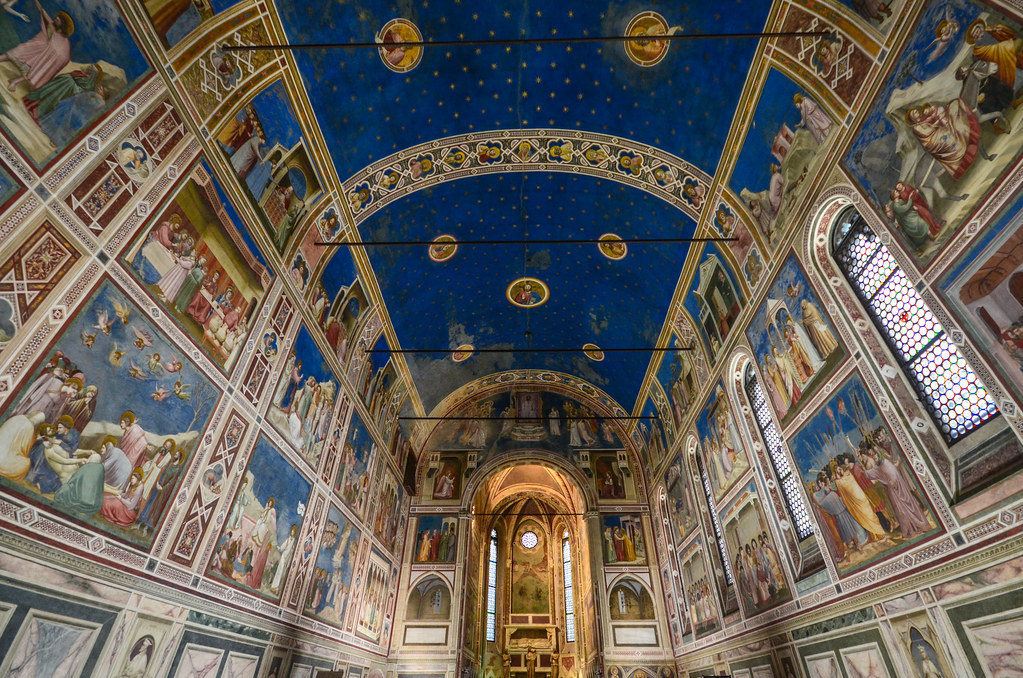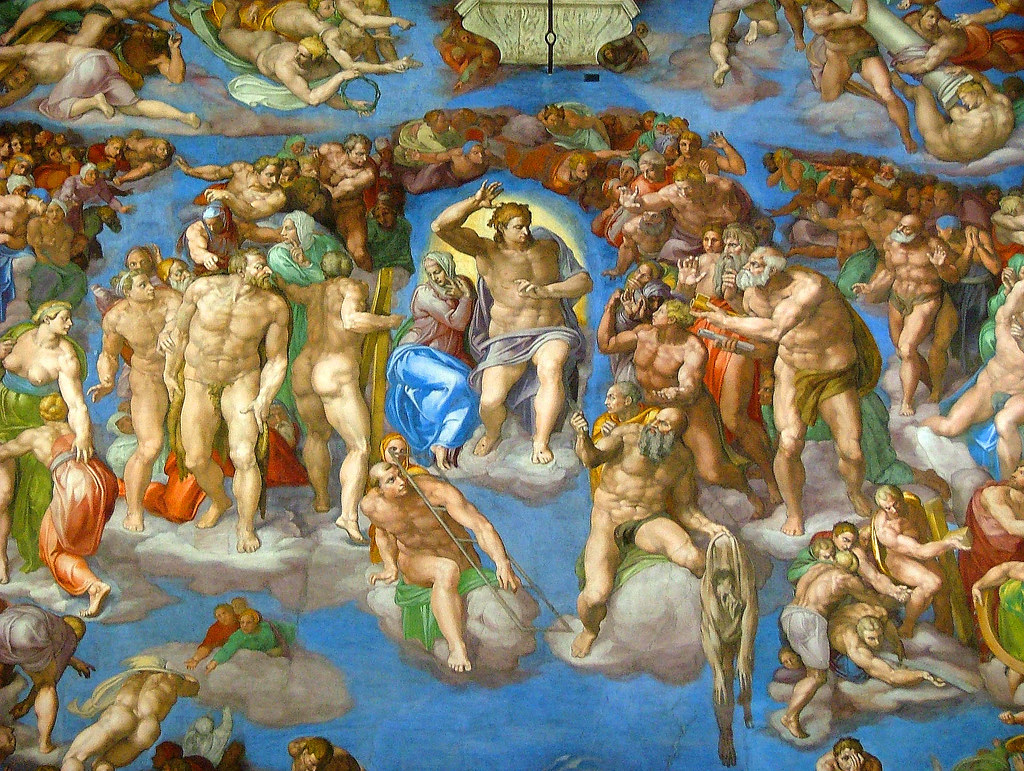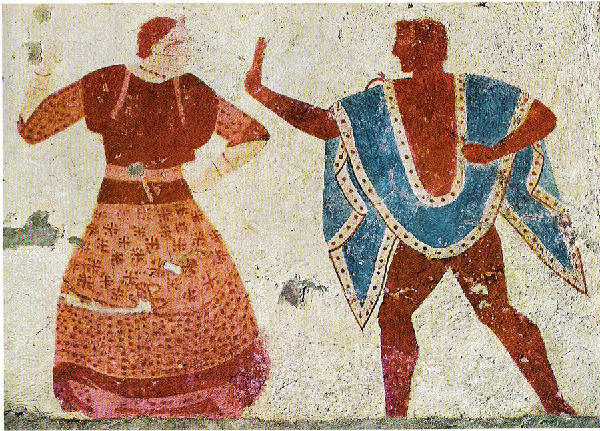L’Afghanistan e il blu della Cappella degli Scrovegni
Senza l'Afghanistan non avremmo mai avuto i capolavori di Giotto e di Michelangelo, di Tiziano e degli antichi Etruschi. L'Afghanistan è dentro tutta la nostra arte.

Senza l'Afghanistan non avremmo mai avuto i capolavori di Giotto e di Michelangelo, di Tiziano e degli antichi Etruschi. L'Afghanistan è dentro tutta la nostra arte.

(English translation below)
Non riesco più a guardare il blu senza pensare al dolore che pervade in questi giorni la meravigliosa terra dell’Afghanistan. Ma non parlo del blu del mare o del cielo, piuttosto di quel blu oltremare che adorna da sempre i più bei capolavori della nostra arte.
Tutto il blu che riempie i nostri occhi quando entriamo nella Cappella degli Scrovegni a Padova, dipinta da Giotto nella sua maturità, o anche il blu della Cappella Sistina, inestimabile tesoro artistico della Città del Vaticano opera di Michelangelo, non esisterebbe senza l’Afghanistan. Quel blu così vivido e appassionato, quel blu quasi sfacciato nella sua audacia, viene infatti dal lapislazzuli, una pietra di rara bellezza, dal colore azzurro intenso, presente naturalmente in grande abbondanza nelle montagne del Badakhshan in Afghanistan.

Quando i turisti ammirano le splendide tombe ipogee dipinte dagli Etruschi nella Necropoli di Tarquinia, patrimonio dell’Unesco, e si soffermano su quei colori ancora così vivi e perfetti, raramente pensano che quel blu così acceso non poteva provenire dal territorio italico. La nostra penisola infatti è assolutamente sprovvista di questa splendida pietra, che arrivava infatti, già allora, dall’altopiano persiano, una formazione geomorfologica di cui oggi fanno parte l’Iran e l’Afghanistan. Un blu per il quale la ricca aristocrazia etrusca era disposta a pagare fior di ricchezze pur di vederne steso il suo meraviglioso pigmento sulle pareti delle tombe destinate a diventare la loro casa in eterno.

Nel Quattrocento il pigmento blu ottenuto dal lapislazzuli era considerato il più perfetto dei colori, degno del mantello della Vergine. Nel colorismo veneto del Cinquecento il blu trova in Tiziano la massima incarnazione. Del resto Venezia era il porto dove arrivavano tutte le merci dall’Oriente, tra cui la preziosa pietra, e di questo si avvantaggiò il grande artista veneto capace di attraversare il senso del bello con l’uso di questo colore, come è evidente nel ritratto di Ludovico Ariosto, in cui il blu è incredibilmente l’unico colore di tutta la tela.
E ancora oggi sono le miniere del Badakhshan in Afghanistan a fornire la maggior parte di lapislazzuli richiesto al mondo, nonostante ci siano giacimenti anche in Cile e nel lago Baikal in Russia, ma la ricchezza dell’Afghanistan è incomparabile. Miniere che vengono da sempre devastate con la dinamite in una contesa d’affari infinita tra talebani e altri signori della guerra, perché il business è enorme, frutta milioni di dollari all’anno, e lascia dietro di sé una lunga scia di sangue.
“Attualmente il lapislazzuli che rifornisce gran parte del mercato mondiale è, secondo ogni ragionevole definizione, un minerale di conflitto”
è quanto si afferma nell’interessantissimo articolo di Global Witness (l’ONG internazionale nata nel 1993 per denunciare le violazioni dei diritti umani in tutto il mondo) intitolato War in the treasury of the people, frutto di un lavoro investigativo durato due lunghi anni, in cui si dichiara anche che
“secondo le stime, le entrate che vanno ai talebani da una sola piccola area del Badakhshan rivaleggiano con le entrate dichiarate del governo dall’intero settore delle risorse naturali afghane”.
Per capirne di più vale la pena leggere il saggio di Ahmed Rashid Talebani. Islam, petrolio e il grande scontro in Asia centrale, di Feltrinelli, uno dei più arguti giornalisti pakistani, che segue da sempre il conflitto afgano, e che nel suo libro racconta la scalata al potere dei Talebani e il loro coinvolgimento attivo nelle guerre d’affari di tutti i minerali rari di cui l’Afghanistan è ricco.
E allora quando ci troveremo ad ammirare ancora tutto quel blu che illumina i capolavori della nostra arte, volgiamo anche solo per un attimo il pensiero a quella terra dilaniata che non è poi così lontana da noi, ma anzi vicinissima, e grazie alla quale possiamo vantarci di così tanta irraggiungibile bellezza. Perché nulla di ciò che succede nel mondo ci è estraneo.
ENGLISH VERSION
I can no longer look at the blue without thinking about the pain that pervades the wonderful land of Afghanistan these days. But I’m not talking about the blue of the sea or the sky, rather of that ultramarine blue that has always adorned the most beautiful masterpieces of our art.
All the blue that fills our eyes when we enter the Scrovegni Chapel in Padua, painted by Giotto in his maturity, or even the blue of the Sistine Chapel, a priceless artistic treasure of the Vatican City by Michelangelo, would not exist without Afghanistan. That blue so vivid and passionate, that blue almost cheeky in its audacity, comes in fact from lapis lazuli, a stone of rare beauty, with intense blue color, naturally present in great abundance in the Badakhshan mountains in Afghanistan.
When tourists admire the splendid hypogean tombs painted by the Etruscans in the Necropolis of Tarquinia, a Unesco heritage site, and linger on those colors that are still so vivid and perfect, they rarely think that such a bright blue could not have come from the Italian territory. In fact, our peninsula is absolutely devoid of this splendid stone, which indeed came, even then, from the Persian plateau, a geomorphological formation of which today Iran and Afghanistan are part. A blue for which the rich Etruscan aristocracy was willing to pay the best of riches in order to see its wonderful pigment spread on the walls of the tombs destined to become their home forever.
In the fifteenth century, the blue pigment obtained from lapis lazuli was considered the most perfect of colors, worthy of the Virgin’s mantle. In the Venetian colorism of the sixteenth century, blue finds its greatest incarnation in Titian. After all, Venice was the port where all the goods from the East arrived, including the precious stone, and this was the advantage of the great Venetian artist who was able to cross the sense of beauty with the use of this color, as is evident in the portrait of Ludovico Ariosto, in which blue is incredibly the only color of the whole canvas.
And even today it is the Badakhshan mines in Afghanistan that supply most of the lapis lazuli required in the world, although there are also deposits in Chile and Lake Baikal in Russia, but the wealth of Afghanistan is incomparable. Mines that have always been devastated with dynamite in an endless business dispute between the Taliban and other warlords, because the business is huge, produces millions of dollars a year, and leaves behind a long trail of blood.
“For now, the lapis which supplies much of the world market is, by any reasonable definition, a conflict mineral”.
this is what is stated in the very interesting article by Global Witness (the international NGO founded in 1993 to denounce violations of human rights all over the world) entitled War in the treasury of the people, the result of an investigative work that lasted two long years, which also states that
“According to estimates, the revenue going to the Taliban from just one small area of Badakhshan rivals the government’s declared income from the entire Afghan natural resources sector”.
To understand more, it is worth reading the essay by Ahmed Rashid Talibani. Islam, oil and the great clash in Central Asia, by Feltrinelli, one of the wittiest Pakistani journalists, who has always followed the Afghan conflict, and who in his book tells of the rise to power of the Taliban and their active involvement in the wars of business of all the rare minerals of which Afghanistan is rich.
And then when we find ourselves still admiring all that blue that illuminates the masterpieces of our art, let’s turn our thoughts, even for a moment, to that torn land that is not so far from us, but rather very close, and thanks to which we can boast of so much unattainable beauty. Because nothing that happens in the world is foreign to us.
3 Commenti

Non è vero che viene usato il lapislazzuli, bensì l’azzurrite, per quanto riguarda la cappella degli Scrovegni.
Bellissimo.
E non sapevo che il commercio dei lapislazzuli fosse così antico con l’Italia – e dire che dell’afghanistan sarei esperto.